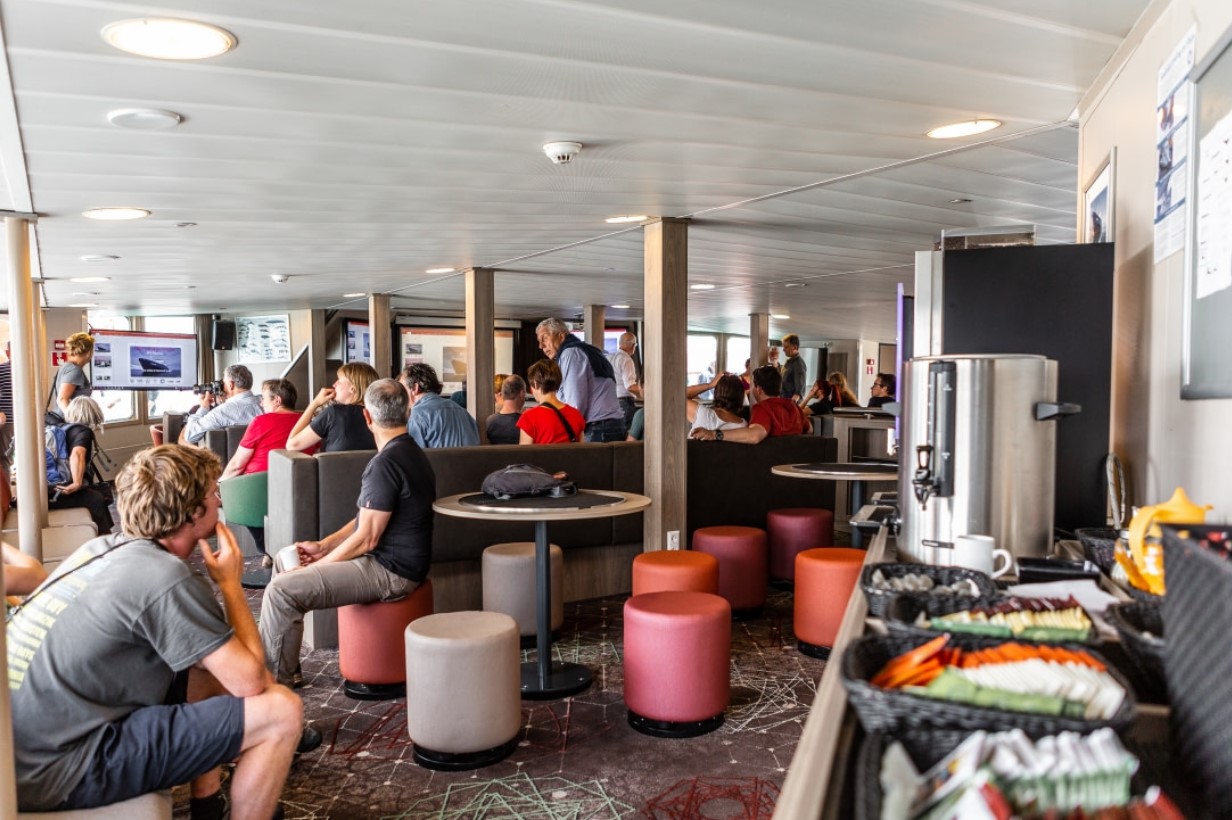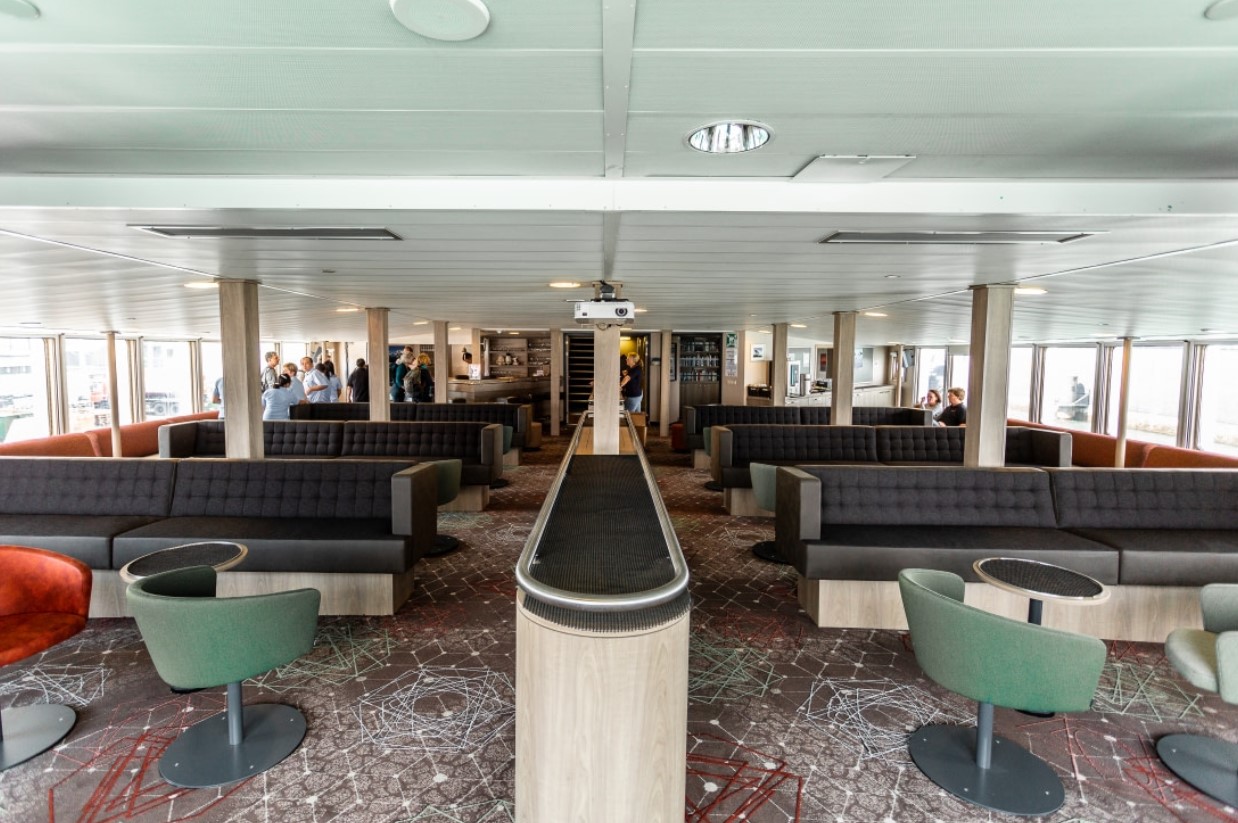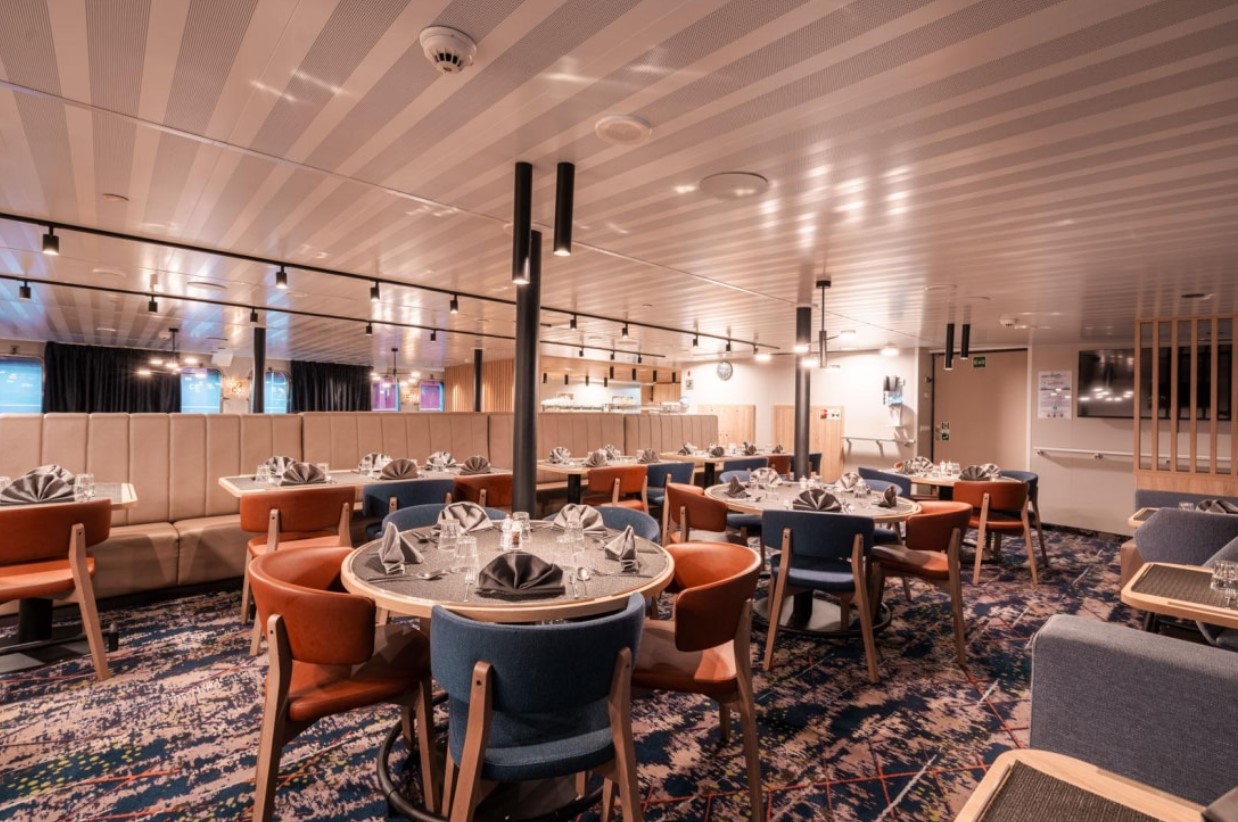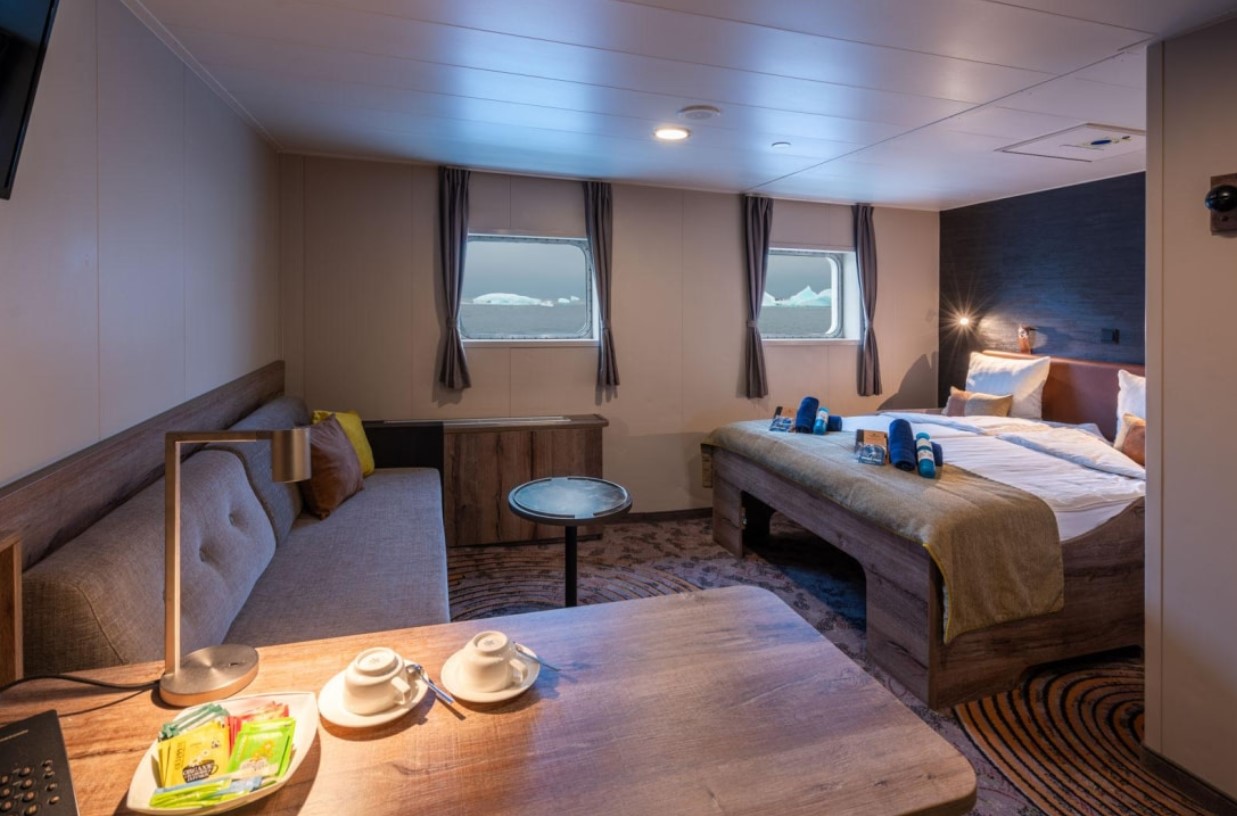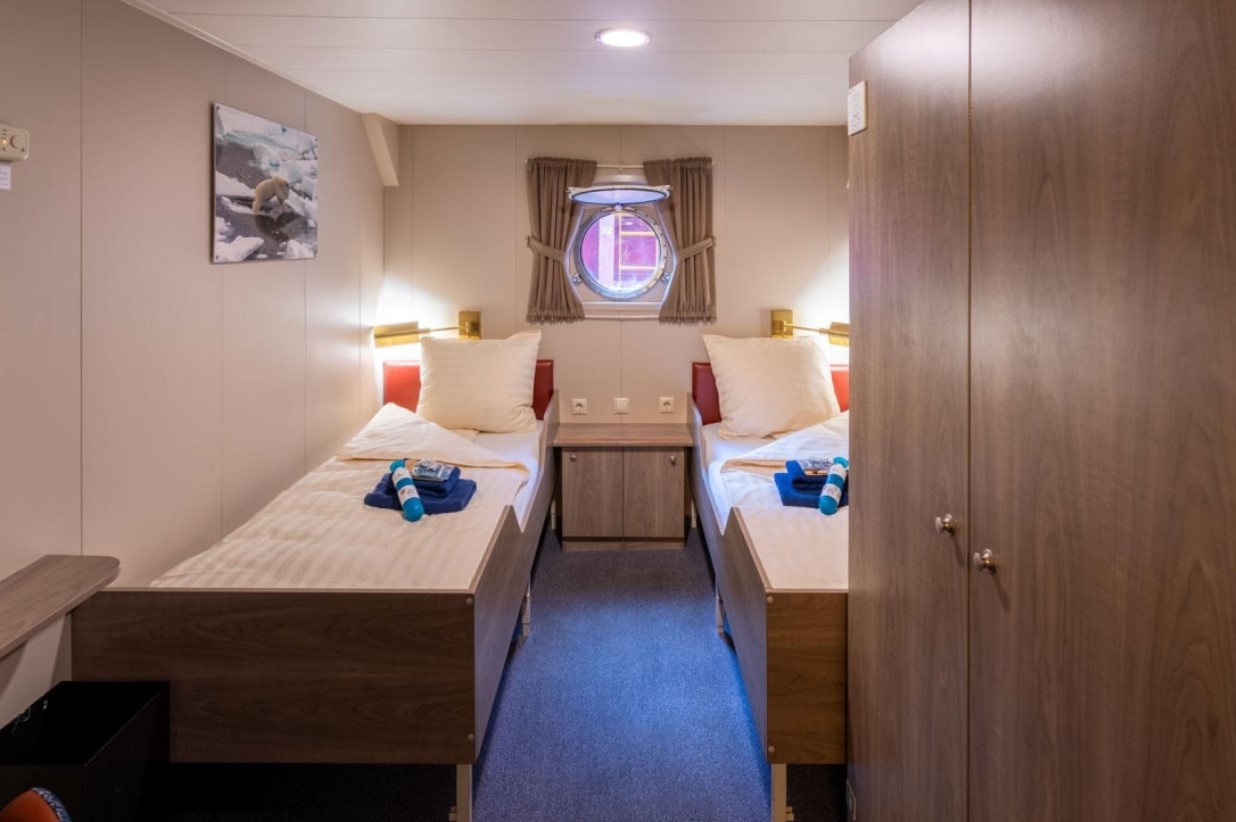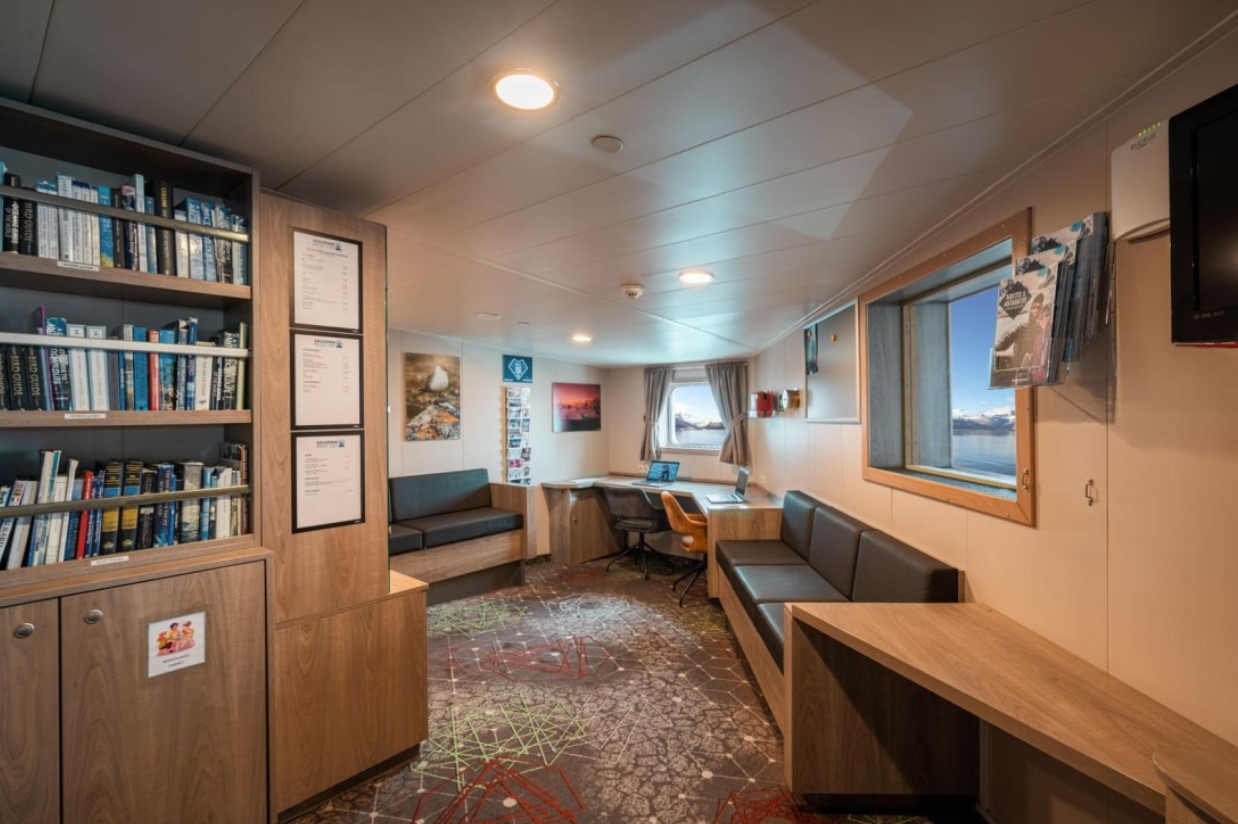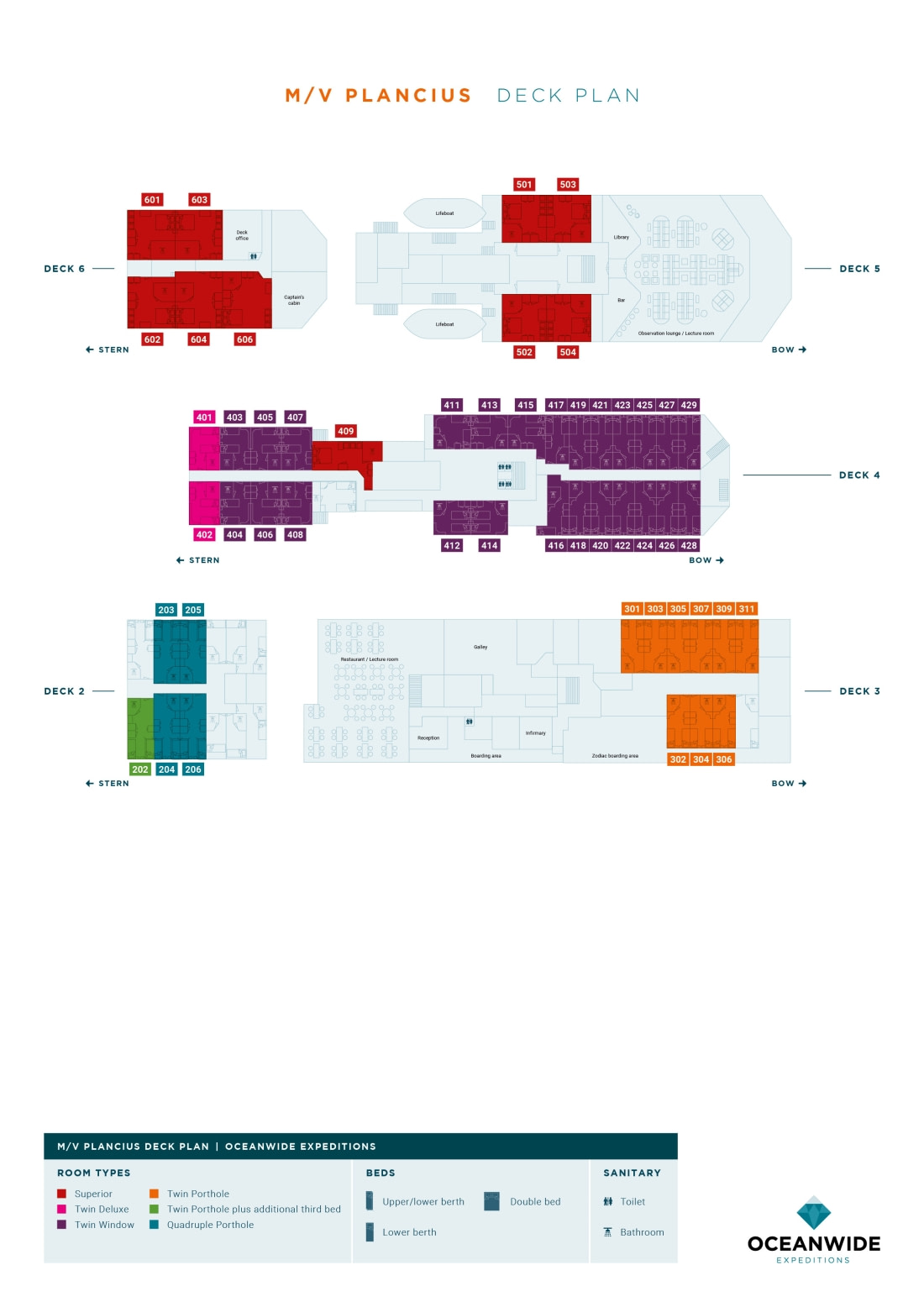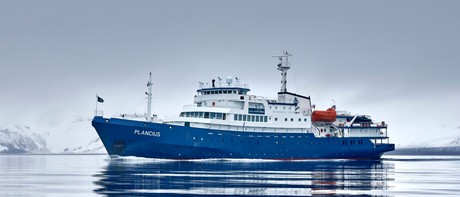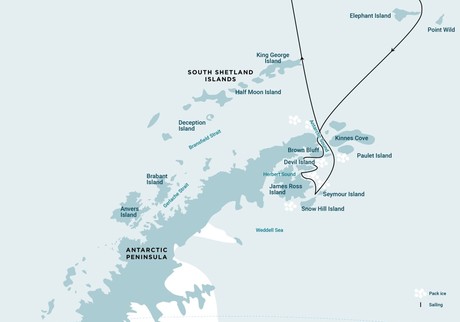Prices on this page are indicative rates
Final price may change due to currency fluctuations. Choose to pay in NZD, AUD, GBP, USD or EUROs. Contact us today and secure your small ship cruise.
The great Weddell Sea not only features massive tabular icebergs, wildly dramatic landscapes, and fascinating historical sites, but it is also one of the best places in Antarctica for viewing iconic wildlife like whales, seals and many other rarely seen seabirds.
Highlights
• Exploring the Remote Weddell Sea – Witness towering icebergs and rarely visited polar landscapes.
• Wildlife Encounters – Spot fin whales, wandering albatrosses, and vast penguin colonies.
• Historic Elephant Island – Visit the legendary site of Shackleton’s famous survival story.
-
Day 1: End of the world, start of a journey
Your voyage begins where the world drops off. Ushuaia, Argentina, reputed to be the southernmost city on the planet, is located on the far southern tip of South America. Starting in the afternoon, you embark from this small resort town on Tierra del Fuego, nicknamed “The End of the World,” and sail the mountain-fringed Beagle Channel for the remainder of the evening.
-
Day 2 - 3: Path of the polar explorers
Over the next two days on the Drake Passage, you enjoy some of the same experiences encountered by the great polar explorers who first charted these regions: cool salt breezes, rolling seas, maybe even a fin whale spouting up sea spray. After passing the Antarctic Convergence – Antarctica’s natural boundary, formed when north-flowing cold waters collide with warmer sub-Antarctic seas – you are in the circum-Antarctic upwelling zone.
Not only does the marine life change, the avian life changes too. Wandering albatrosses, grey-headed albatrosses, black-browed albatrosses, light-mantled sooty albatrosses, cape pigeons, southern fulmars, Wilson’s storm petrels, blue petrels, and Antarctic petrels are a few of the birds you might see.
-
Day 4: From Point Wild to the Weddell Sea
We will arrive early to the famous Point Wild, Elephant Island, where Shackleton’s crew made their first landing after the loss of their ship, Endurance. This inhospitable spit of land is a favorite among our guests, and if conditions permit, we will offer activities around the point before setting off for the Weddell Sea.
-
Day 5: Entering the Weddell Sea
The great Weddell Sea features massive tabular icebergs, wildly dramatic landscapes, and fascinating historical sites. It is also one of the best places in Antarctica for viewing iconic wildlife like whales, seals, and rarely seen seabirds.
We may visit the following locations, depending on local conditions:
Antarctic Sound - Antarctic Sound is nicknamed “Iceberg Alley,” as we often see enormous tabular icebergs here.
Brown Bluff - Possibly the most scenic location in the northern Antarctic Continent, Brown Bluff is characterized by sheer canyon walls, fallen boulders, and beautiful volcanic creations capped with ice.
Herbert Sound - We will focus our attention on the visually impressive areas of Naze Peninsula and Comb Ridge.
Devil Island - This island offers a magnificent vantage point for hikers willing to foot it to the top of the hill. Melting ice sometimes forms a waterfall dropping from the cliffs close to Cape Well-met.
Erebus and Terror Gulf - Here we look for new activity opportunities and may visit Vega Island, experiencing the wilderness of Antarctica in its most remote places.
-
Day 9 - 10: Familiar seas, familiar friends
Your return voyage is far from lonely. While crossing the Drake, you’re again greeted by the vast array of seabirds remembered from the passage south. But they seem a little more familiar to you now, and you to them.
-
Day 12: There and back again
Every adventure, no matter how grand, must eventually come to an end. It’s now time to disembark in Ushuaia, but with memories that will accompany you wherever your next adventure lies.
-
Please note:
All itineraries are for guidance only. Programs may vary depending on ice, weather, and wildlife conditions. Landings are subject to site availabilities, permissions, and environmental concerns per IAATO regulations. Official sailing plans and landing slots are scheduled with IAATO prior to the start of the season, but the expedition leader determines the final plan. Flexibility is paramount for expedition cruises. The average cruising speed for our vessel is 10.5 knots.
-
02 March, 2027 to 13 March, 2027
 1 porthole
2 upper & lower berths
Private shower & toilet
Desk & chair
Flatscreen TV
Telephone & WiFi (supplemented)
Hair dryer
Ample storage space
This cabin is suitable for families traveling with children, or passengers who do not require a twin or more luxurious cabin
1 porthole
2 upper & lower berths
Private shower & toilet
Desk & chair
Flatscreen TV
Telephone & WiFi (supplemented)
Hair dryer
Ample storage space
This cabin is suitable for families traveling with children, or passengers who do not require a twin or more luxurious cabin
 1 porthole
1 upper berth & 2 lower berths
Private shower & toilet
Desk & chair
Flatscreen TV
Telephone & WiFi (supplemented)
Hair dryer
Ample storage space
This cabin is suitable for families traveling with children, or passengers who do not require a twin or more luxurious cabin
1 porthole
1 upper berth & 2 lower berths
Private shower & toilet
Desk & chair
Flatscreen TV
Telephone & WiFi (supplemented)
Hair dryer
Ample storage space
This cabin is suitable for families traveling with children, or passengers who do not require a twin or more luxurious cabin
 1 porthole
2 lower berths
Private shower & toilet
Desk & chair
Flatscreen TV
Telephone & WiFi (supplemented)
Hair dryer
Ample storage space
1 porthole
2 lower berths
Private shower & toilet
Desk & chair
Flatscreen TV
Telephone & WiFi (supplemented)
Hair dryer
Ample storage space
 1 window
2 lower berths
Private shower & toilet
Desk & chair
Flatscreen TV
Telephone & WiFi (supplemented)
Hair dryer
Ample storage space
1 window
2 lower berths
Private shower & toilet
Desk & chair
Flatscreen TV
Telephone & WiFi (supplemented)
Hair dryer
Ample storage space
 2 windows
2 lower berths
Private shower & toilet
Desk & chair
Flatscreen TV
Telephone & WiFi (supplemented)
Hair dryer
Ample storage space
These cabins are corner cabins and are slightly more spacious than the normal twin porthole/window cabins
2 windows
2 lower berths
Private shower & toilet
Desk & chair
Flatscreen TV
Telephone & WiFi (supplemented)
Hair dryer
Ample storage space
These cabins are corner cabins and are slightly more spacious than the normal twin porthole/window cabins
 2 windows
1 double bed
1 sofa bed
Private shower & toilet
Desk & chair
Flatscreen TV
Telephone & WiFi (supplemented)
Refrigerator
Coffee & tea maker
Hair dryer
Ample storage space
2 windows
1 double bed
1 sofa bed
Private shower & toilet
Desk & chair
Flatscreen TV
Telephone & WiFi (supplemented)
Refrigerator
Coffee & tea maker
Hair dryer
Ample storage space
-
Plancius
Plancius
Vessel Type: Expedition
Length: 89 metres
Passenger Capacity: 108 - 116
Built / refurbished: 1976 / 2009
M/v “Plancius” was built in 1976 as an oceanographic research vessel for the Royal Dutch Navy and was named “Hr. Ms. Tydeman”. The ship sailed for the Dutch Navy until June 2004 and was eventually purchased by Oceanwide Expeditions. The vessel was completely rebuilt as a pssenger vessel in 2009 and complies with the latest SOLAS-regulations (Safety Of Life At Sea). M/v “Plancius” is classed by Lloyd’s Register and flies the Dutch flag.
Perfect for any expedition
M/v “Plancius” accommodates 108 passengers with private toilet and shower in 4 quadruple porthole cabins, 9 twin porthole cabins, 25 twin cabins with window and 2 twin deluxe cabins, all (ca. 12,5 square meters) and 10 twin superior cabins (ca. 21 square meters). All cabins offer lower berths (one queen-size bed in the superior cabins and two single beds in the twin cabins), except for the 4 quadruple cabins (for 4 persons in 2x upper and lower beds).
Plancius: a vessel with comfort and character
Please be aware that a small number of cabins may have a partially obstructed view due to the design requirements of the ship. The best view is always on the outer deck or the bridge.The vessel offers a restaurant/lecture room on deck 3 and a spacious observation lounge (with bar) on deck 5 with large windows, offering full panorama view. M/v “Plancius” has large open deck spaces (with full walk-around possibilities on deck 4), giving excellent opportunities to enjoy the scenery and wildlife. She is furthermore equipped with 10 Mark V zodiacs, including 40 HP 4-stroke outboard engines and 2 gangways on the starboard side, guaranteeing a swift zodiac operation. M/v “Plancius” is comfortable and nicely decorated, but is not a luxury vessel. Our voyages in the Arctic and Antarctic regions are primarily defined by an exploratory educational travel programme, spending as much time ashore as possible. Plancius fully meets our demands to achieve this. The vessel is equipped with a diesel-electric propulsion system which reduces the noise and vibration of the vessel considerably. The 3 diesel engines generate 1.230 horse-power each, giving the vessel a speed of 10 - 12 knots. The vessel is ice-strengthened and was specially built for oceanographic voyages. M/v “Plancius” is manned by an international crew of 40 (20 nautical crew and 20 hotel crew), 8 expedition staff (1 expedition leader, 1 assistant expedition leader and 6 guides/lecturers), and 1 doctor.
Age and Nationality
Passengers on a typical voyage range from their 30s to their 80s - with a majority usually from 45 - 65. Our expeditions attract independent-minded travellers from around the world. They are characterised by a strong interest in exploring remote regions. The camaraderie and spirit that develops aboard is an important part of the expedition experience. Many departures have several nationalities on board.
Dress code
In keeping with our expeditions atmosphere, dress on board is informal. Bring casual and comfortable clothing for all activities. Keep in mind that much of the spectacular scenery can be appreciated from deck, which can be slippery. Bring sturdy shoes with no-slip soles and make sure the parka is never far away in case of the call "Whales!" comes over the loudspeaker and you have to dash outside. Wear layers since it is comfortably warm aboard the ship - and often cold on deck.
Currency & payment
Refreshments from the bar and souvenirs will be charged to your cabin. The day before departure you can settle your bill with the Hotel Manager and pay by credit card (Visa or MasterCard) or cash (Euro or Dollar). We do not accept cheques of any kind. The prices and standard currency on board our vessels is the Euro. Other currencies may be accepted at the discretion of the hotel manager at prevailing rates.
Electric current
The electrical supply aboard the ship is 220v, 60Hz. Electrical outlets are standard European with two thick round pins. You may need a 220v/110v converter.
Gratuities
The customary gratuity to the ship's service personnel is made as a blanket contribution at the end of the voyage which is divided among the crew. Tipping is a very personal matter and the amount you wish to give is at your discretion. As a generally accepted guideline, we suggest US$8 to US$10 per person per day. It is better for the crew, if you can give them cash US Dollar.
Non-smoking policy
On board our vessels we have a non-smoking policy. It is prohibited to smoke inside the ship. You can smoke in the designated smoking areas. Please respect the wishes of non-smokers.
Your physical condition
You must be in good general health and you should be able to walk several hours per day. The expedition is ship-based and physically not very demanding. Although we spend as much time as possible ashore, you are welcome to remain aboard the ship if you like. To join most excursions, you must be able to get up and down the steep gangway from the ship to the water level to board the Zodiacs. Staff will assist you in and out of the boats. This will become progressively easier with practice. Ashore it can be slippery and rocky. You are travelling in remote areas without access to sophisticated medical facilities, so you must not join this expedition if you have a life-threatening condition, or need daily medical treatment.
